Carving out your position in a crowded market requires positioning your brand to stand out from the competition. Brand positioning is a vital part of your marketing strategy and especially for your brand identity. To help inspire you, we’ve singled out 10 of the best brand positioning examples from around the world.
What Brand Positioning Is
Brand positioning showcases your unique value in the marketplace and explains why customers should choose your brand over the competition. It relies on the relationship between your customer and how your marketing presents your brand’s value proposition. It is an essential part of building a strong brand presence.
Read the famous brand positioning examples below, as each offers key insights on how to set your brand apart from competitors:
1. Burger King: Have It Your Way

An ad with the “Have It Your Way” brand positioning example for Burger King
(Source: Hook Agency)
Burger King is no stranger to stiff competition. In fact, it’s long trailed rival McDonald’s in the quick service restaurant (QSR) category. However, its brand positioning example is simple and straightforward: place the customer and their desire at the center of every Burger King product. To do this, Burger King introduced the slogan “Have it your way” in the 1970s.
By encouraging the customer to “have it your way,” the strong implication is that Burger King delivers a fresh, made-to-order product while all other brands deliver a boring, stock product. Only Burger King delivers a unique product. This slogan encompasses the entire strategy by positioning the customer’s wants as the driving force behind every product and addressing the customer’s “pain”—that fast food burgers are all the same.
Recently, Burger King took the additional step of expanding on this. They unveiled the “You Rule” campaign, which leans into the royalty imagery of the Burger King brand. In the updated strategy, it is the customer who is the king of burgers, not a corporate mascot. Positioning the customer as a king further increases the customer’s sense of empowerment to have it their way.
2. Apple: Think Different.
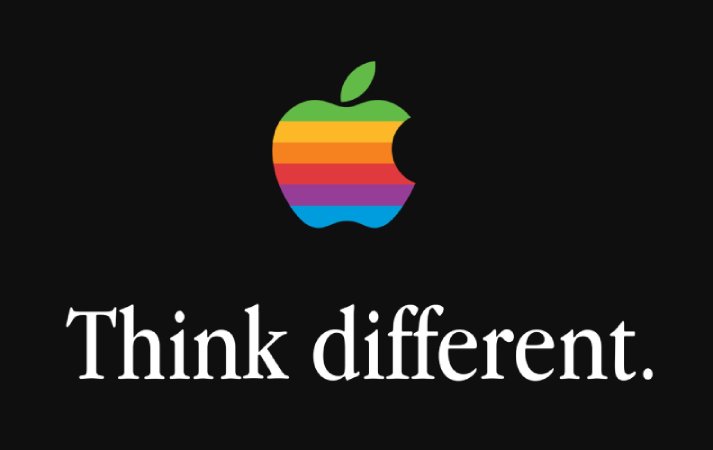
Apple’s “Think different.” brand positioning example highlights the unique qualities of Apple products.
(Source: Wikipedia)
Apple Inc. is the most valuable company on the planet, so it makes sense that this famous brand positioning example makes it stand out. This was typified from 1984-2002 with Apple’s “Think different.” strategy. Apple’s brand positioning is clear cut:
“Apple emphasizes technological research and advancement and takes an innovative approach to business best practices—it considers the impact our products and processes have on its customers and the planet.” (Source: Fabrik Brands)
Enter “Think different.” When this slogan was first introduced, Apple’s biggest competitor was IBM, which prided itself on the uniformity of its products and services. Apple’s “Think different.” campaign was a direct response to IBM’s own “Think” campaign, and it worked. By encouraging users to “think different,” Apple sets its products as unique answers to customer pain points and encourages them to think creatively about solutions to problems.
As a result, Apple became the “anti-IBM” and its personal computer products eventually overtook Big Blue. Today, Apple is the number one manufacturer of personal computing products and IBM no longer makes personal computers. Think different, indeed.
3. Nike: Just Do It.
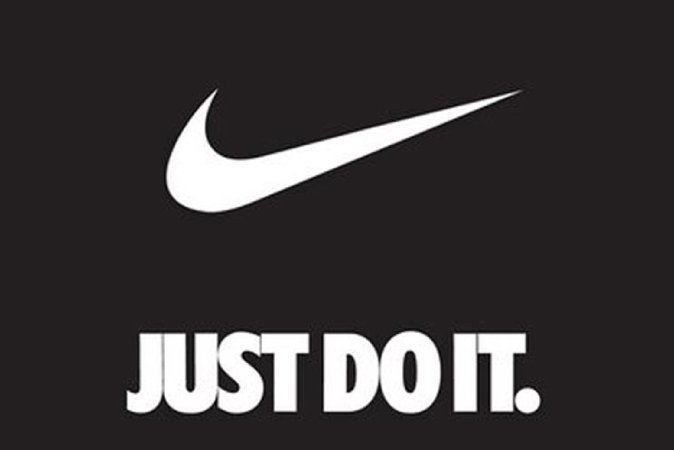
Campaign Live calls Nike’s “Just do it.” campaign “arguably the greatest tagline of the 20th century.
(Source: Campaign Live)
Nike’s brand positioning statement example evolved out of a need to differentiate itself in a crowded industry: sports apparel. Specifically, Nike was the underdog in the athletic footwear business, trailing far behind the No. 2 Converse. It wanted to change that.
To do so, Nike’s branding positioned each customer as a hero and encouraged the hero to reach for their goal no matter how difficult. This is summed up in the Nike motto: Just do it.
Nike’s example is one of empowerment. The subtext is that, with Nike, you can succeed in your performance goals. All you have to do is just do it—wearing Nike sneakers, of course. This brand positioning strategy helped propel Nike from a third-tier shoe manufacturer to one of the world’s most successful sports and lifestyle brands.
Today, Nike is the undisputed leader in athletic footwear and active apparel. Its slogan is engrained in the fabric of the company. Also, Nike now owns Converse. Empowering heroes, it seems, is a working strategy.
You don’t have to be a branding genius to come up with a great brand positioning statement. You can use our guide to writing a brand positioning statement, which includes a free, downloadable template.
4. Crate & Barrel: Beauty & Purpose
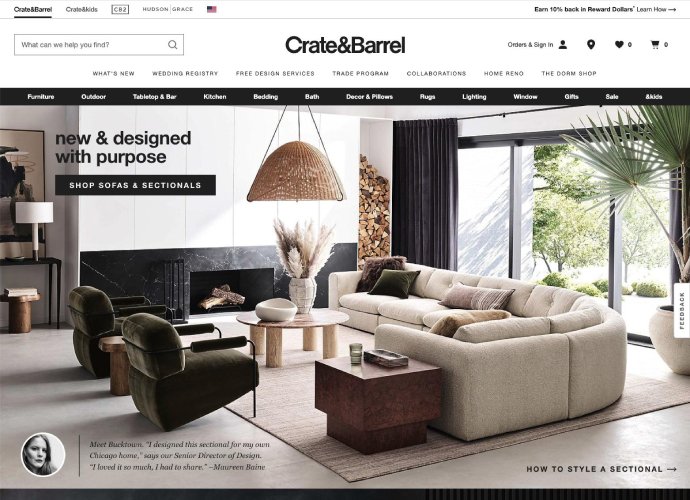
The Crate & Barrel homepage features a brand positioning example of design with purpose.
(Source: Crate & Barrel)
The Crate & Barrel brand positioning statement example states, “We inspire people with a modern mindset to create timeless homes and lives with beauty and purpose.” (Source: Crate & Barrel) This sentiment is at the root of everything the furniture and atelier does, from publishing seasonal catalogs to staging its stores.
Crate & Barrel exemplifies its positioning with design-forward furnishings that cater to individuals with a modern sensibility. This encourages consumers to engage because positive associations with the term “modern” suggest to customers that they, too, can be modern and contemporary. All they need to do is shop Crate & Barrel.
With its customer-centered focus, this home decor and furnishings seller has outlasted other furniture and home goods retailers, including the likes of Pier 1 and Bed, Bath, and Beyond. It continues to thrive in the luxury home goods space.
5. Chipotle: Food With Integrity
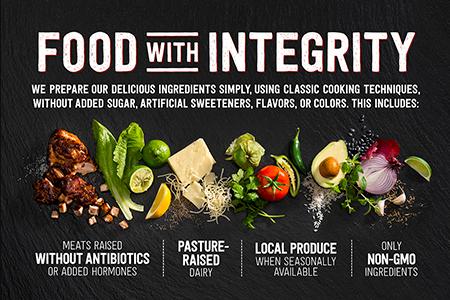
Chipotle Mexican Grill’s food with integrity campaign highlighted the brand’s commitment to whole ingredients.
(Source: Money Marks & Media)
Chipotle Mexican Grill is a fast-casual restaurant that prides itself on the quality of its food—going so far as to highlight that the brand uses just 53 ingredients “with names you can pronounce.” Its strategy is to differentiate itself from other Mexican fast food chains, focusing on healthful dining and whole ingredients. This focus establishes not only a key differentiator between Chipotle and its competitors but also the core value proposition.
To further exemplify their message of food with integrity, Chipotle’s advertising boasts its GMO-free ingredients, locally sourced produce, and antibiotics-free meats. This further reinforces the idea that its food is better than the competition, its key differentiation in the fast-casual space.
With its focus on “food with integrity,” Chipotle establishes itself as a responsible brand. The implication is responsible consumers will dine at a Chipotle, which gives the brand clout and feeds the consumer’s desire to be more responsible in their consumer choices.
Read more:
A brand positioning statement is one of the four key statements you’ll create for your small business. The others are:
6. SONIC: America’s Drive-In
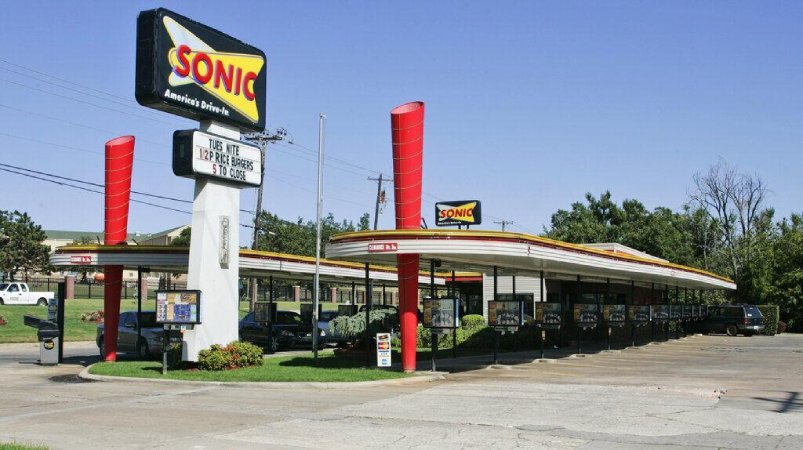
SONIC’s brand positioning example leans heavily on nostalgia to drive customer engagement. (Source: KITV)
Fast food franchise SONIC created an iconic branding statement around the nostalgia of a drive-in diner. Positioning the brand as “America’s Drive-In” creates a sense of longing in customers by reminding them of simpler, more wholesome times. Its restaurants feature classic designs with bright, inviting neon lighting in vibrant colors that harken back to drive-ins along historic Route 66.
SONIC’s branding goes beyond images and advertising, encompassing its entire business model. Instead of ordering at a window, customers use individual old-fashioned call box menus. The menu itself is exhaustive, featuring thousands of potential combinations of classic American comfort foods and sweet treats. Even the logo harkens back to the neon signs of America’s Atomic Age.
This nostalgia factor promises that visiting a SONIC will deliver customers a uniquely American family dining experience. Almost everything about the SONIC brand is designed to make for a unique fast food experience. As a result, customers engage with SONIC on a deeply emotional level.
7. Peloton: Motivation That Moves You
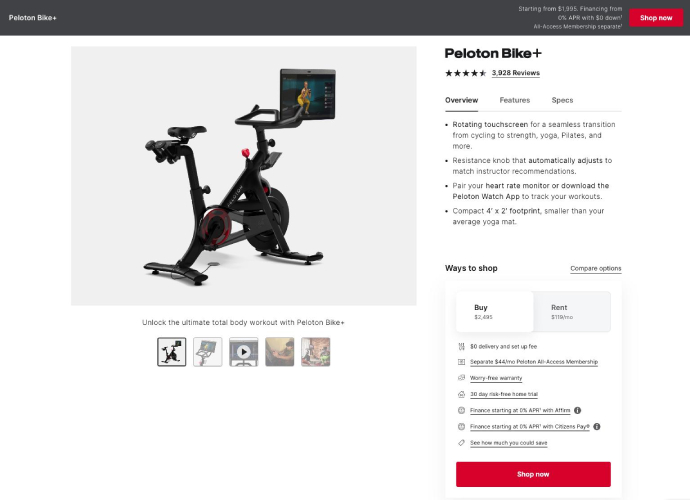
Peloton’s website features its products and video instructors prominently. (Source: Peloton)
Fitness equipment manufacturer Peloton has built deep relationships with its customers through a brand positioning statement example it calls “motivation that moves you.” The statement is clear-cut: “Through its unique combination of world-class instructors, content, music, hardware, and software, the Peloton experience makes fitness so motivating and exhilarating that not only will you love working out, but you’ll stick with it.”
“Many companies can make excellent fitness equipment,” says Fit Small Business editor and avid Peloton user Jess Pingrey. “I’ve been riding with Peloton for over two years, and I believe what makes Peloton stand out from the pack is their world-class instructors who create workouts that engage and motivate members to keep them coming back.”
Part of that motivation is in the brand’s instructors, with whom users form a bond. “Peloton not only allows instructors to let their unique personalities shine, they encourage it. This fosters robust connection with members and drives loyalty to the brand,” Pingrey says.
8. L’Oreal: Because You’re Worth It
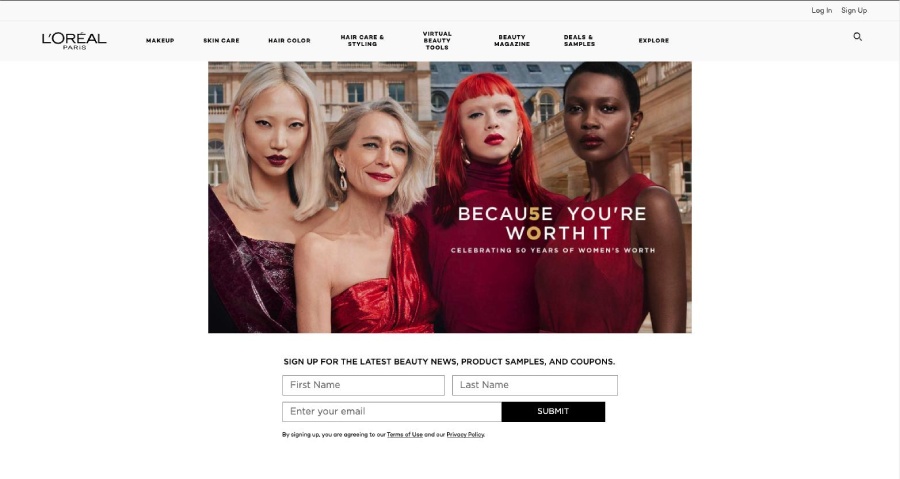
L’Oreal’s “Because You’re Worth It” campaign celebrates 50 years. (Source: L’Oreal Paris)
Cosmetics and beauty products brand L’Oreal positions itself as a luxury brand in the cosmetics industry. Its brand positioning statement includes embracing the relative expensiveness of its products compared to competitors and encouraging its customers to invest in themselves with its 50-year-old slogan, “Because you’re worth it.”
With its focus on the value an individual places on themself, L’Oreal minimizes the expensive nature of its products and, instead, positions itself as the brand discerning customers can turn to. Through its ad campaigns, store displays, and marketing, L’Oreal leads its customers to believe in the quality of its products, which in turn gives the brand a higher perceived value.
9. GE: We Bring Good Things to Life
A collection of GE commercials featuring the famous brand positioning example “We bring good things to life”
General Electric is a manufacturer of everything electronic from refrigerators to jet engines. For decades its brand was synonymous with innovation. Its brand positioning relied on this innovation to differentiate it from a market in which manufacturers scrambled to copy one another. Summing up GE’s focus on innovation was its slogan, which ran from 1979 to 2003, “We bring good things to life.”
GE’s brand positioning statement example highlights its innovation and its corporate responsibility. Its products have been vital to improving consumers’ lives for decades, whether through a new microwave or a Magnetic Resonance Imager (MRI) in the hospital. The result was impressive.
In its heyday, GE was one of the most trusted brands on the planet, and millions of U.S. households likely have one or more GE products in it today. Whether it was its consumer products like light bulbs or its home appliances, a GE product was seen as having a high quality and value.
10. Coca-Cola: Coke is it!
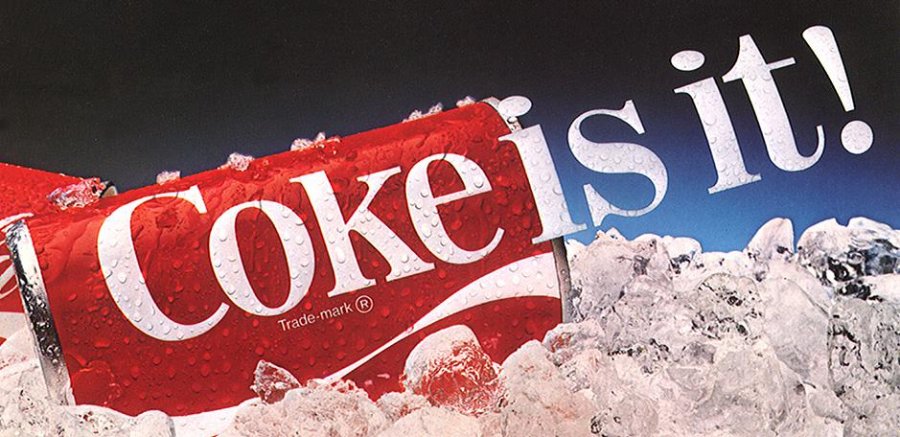
An ad featuring one of Coca-Cola’s most famous slogans, “Coke is it!” (Source: Coca-Cola Co.)
Coca-Cola is arguably one of the most successful brands in history. Its brand positioning statement example places the consumer’s experience at the heart of its marketing strategy by focusing on the refreshing nature and quality of a Coca-Cola beverage. Though its slogan has changed throughout the years, the core of its marketing is to be focused on refreshment and quality.
The “Coke is it!” slogan of the late 1980s featured ice-cold Cokes being opened, poured over ice, or filling ice chests to the brim, always accompanied by a happy, smiling person consuming a Coke. The classic Coca-Cola polar bears are another example of how the brand focuses on refreshment and quality. The polar bears drink Coca-Cola surrounded by the cold, crisp ice of the Arctic in a nod to refreshment, and they share Cokes with their children underscoring the wholesomeness of the product they sell. Not to mention how the bright red product labeling stands out against the nearly all-white surroundings.
While always leaning into a quality and refreshment focus with its brand strategy, the result of frequently changing tag lines and its marketing is a nimble brand that is always encouraging consumers to remain loyal to Coca-Cola.
Why Brand Positioning Is Important
Brand positioning is how you differentiate yourself from your competitors, effectively the “why” for the reason a customer should choose you. An effective brand positioning strategy will shape your marketing and advertising efforts and inform how customers interact with your brand. It helps you craft a consistent marketing message and convey that message to potential customers.
Research shows consistent branding can increase your revenue between 10% and 20%, according to the State of Brand Consistency report. That is a significant increase in revenues. However, it’s not the only reason to focus on your brand position.
Applying your brand positioning strategy consistently is vital to increasing brand awareness—one of the top goals of marketing professionals across industries. According to Semrush, increasing brand awareness was the leading goal of 45% of marketing pros.
Read more statistics about the importance of brand awareness, consistency, and strategy in our article about branding statistics.
Common Elements of Good Brand Positioning Examples
A brand positioning statement doesn’t have to be complex or convoluted. In fact, many of the best brand positioning statements are simple and concise. Depending on the source, there are between four and eight elements of a brand positioning statement. The most important are:
- Brand goal: What your brand wants to achieve
- Target audience: Who your perfect customer is
- Brand identity: What your brand is or stands for
- Brand differentiation: Why your brand is different from the competition
Consider Crate & Barrel’s positioning statement:
“We inspire people with a modern mindset to create timeless homes and lives with beauty and purpose.”
This statement highlights the brand’s ideal customer, “people with a modern mindset.” It establishes a goal “to create timeless homes.” And it underscores the value proposition of the company’s products, which are made with “beauty and purpose” in mind. Reading this statement, it is easy to identify the four elements highlighted above.
- Brand goal: To inspire customers
- Target audience: People with a modern mindset
- Brand identity: Beauty and purpose
- Brand differentiation: Creating timeless homes and lives
Note you don’t have to say what the competition is to differentiate yourself. Crate & Barrel’s differentiation is “creating timeless homes and lives,” implying other brands lack this trait.
Frequently Asked Questions
The three most common brand positioning types are comparative, differentiation, and segment positioning. Comparative positioning aligns your products with similar products from other brands to compare values. Differentiation explains how your brand outshines the competition with unique features. Segmentation divides your potential customers into distinct groups based on shared traits. All can be used individually or in tandem to guide your marketing efforts.
Identify the goal your brand is meant to achieve for your customer. Then, explain who the ideal customer is. Establish your brand’s identity and the unique selling proposition that differentiates it from your competitors. Finally, highlight the unique value proposition your brand offers customers.
A brand positioning statement is critical to building an effective brand presence. When you create a brand positioning statement, it serves as a guidepost for all of your marketing and advertising efforts. Brand positioning statements are one of the core statements you’ll produce, alongside mission statements, values statements, and vision statements.
Bottom Line
These brand positioning examples inspire and guide crafting your company’s brand strategy and statements. With attention to the value your brand brings to potential customers and what makes your product or service unique, you can create a brand identity that positions you for long-term growth.
For small businesses that need branding assistance and advice for their digital branding, consider Straight North for your branding needs. Straight North is a full-service internet marketing agency that can craft a strategy to fit your needs and your budget. For more information or to get started, visit Straight North.